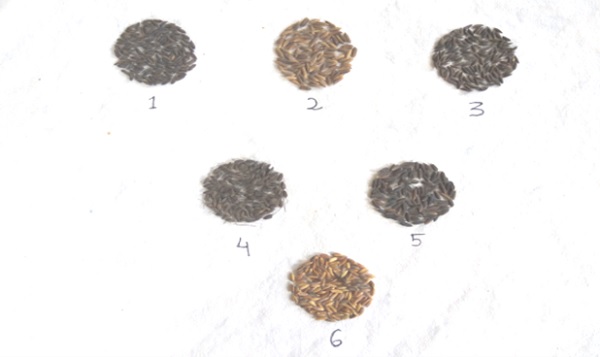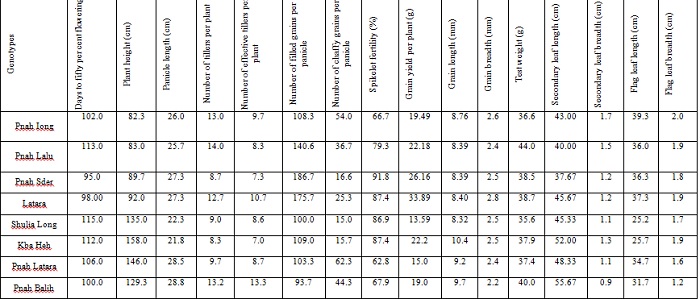Collection and Evaluation of Black rice genotypes for Meghalaya
Amit Kumar*, PK Sinha, Bagish Kumar, Subhash Babu, R Laha, K P Mohapatra and N Prakash ICAR Research Complex for NEH Region, Umiam, Meghalaya, 793103 Email: amit4118@gmail.com
Black rice is a glutinous type of rice with high level of nutrients. The pericarp of black rice is black due to anthocyanin pigment, which is proved to be an antioxidant. Black rice is also termed as purple rice, forbidden rice, heaven rice, imperial rice, king’s rice and prized rice based on various geographical locations. Black rice can serve not only as a staple food having better taste and aroma but also as a medicine to cure various illnesses. It is having higher mineral contents such as Fe, Zn, Mn and P as compared to white rice. Keeping this in view a total of 8 black lines were collected from different parts of Meghalaya. The lines were grown in lowland farm in three replications with 20 x 15 cm spacing with five rows per replication. Recommended agronomic measures were done to ensure proper growth and development of plants. The performances of genotypes for agro-morphological traits are presented in Table 1. Evaluation trial revealed that the genotypes Latara recorded the maximum grain yield per plant (33.89 g) followed by Pnah Sder (26.16 g) and Kba Heh (22.17 g). Utilization of these lines in developing black rice varieties, short in stature with higher yield can be a remarkable breakthrough in enhancing farmers’ income and livelihood. The exploration of black rice varieties from other parts in Meghalaya is also going on.
Table 1: Performance of black rice genotypes in Meghalaya

